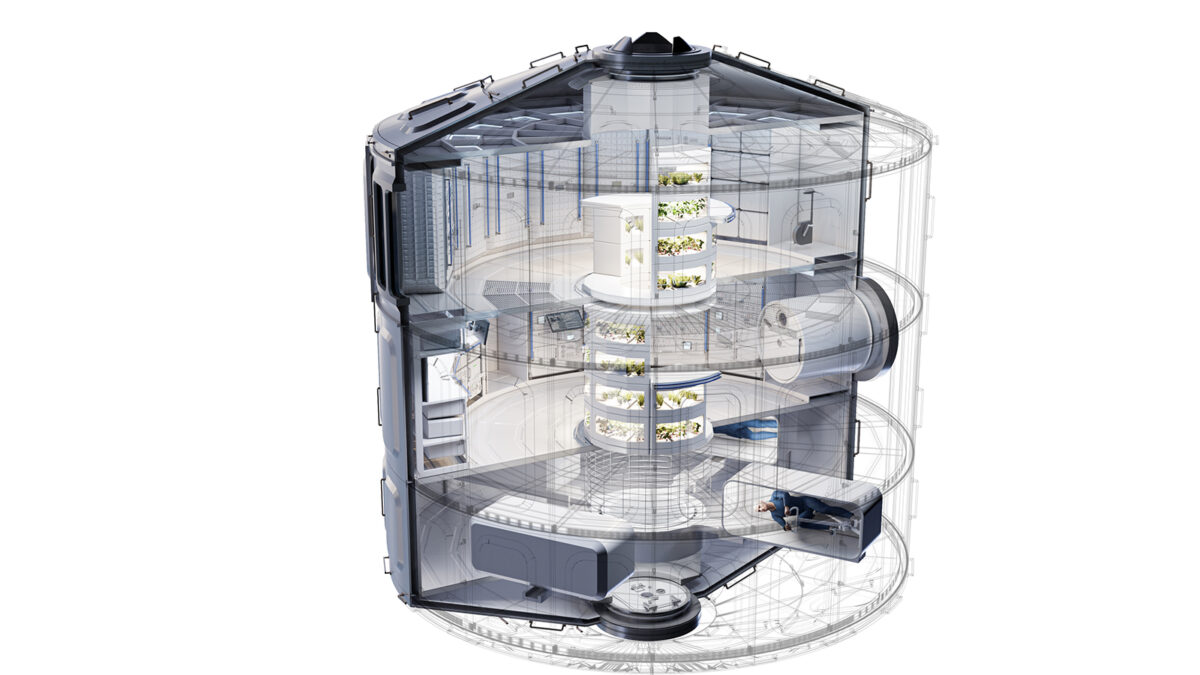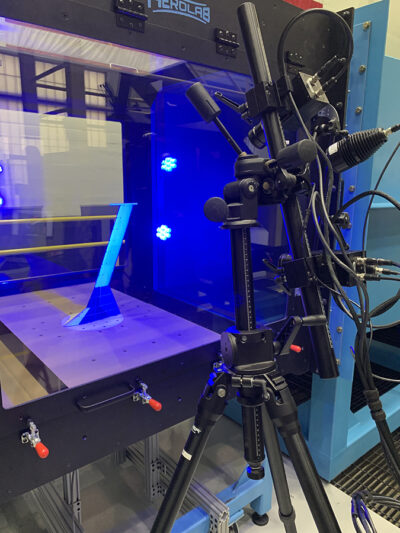Expanding the boundaries of space habitat design
By Theodore W. Hall|December 2023
The Space Architecture Technical Committee focuses on the architectural design of the environments where humans will live and work in space, including facilities, habitats and vehicles.
The past year saw progress on several frontiers, including artificial gravity and larger monolithic modules designed in anticipation of a new generation of super-heavy launchers, as well as rapidly developing inflatable structure technology.
In April, Germany-based Airbus Defence and Space and Austria-based LIQUIFER Systems Group unveiled concepts for the Airbus LOOP multipurpose orbital module. Plans call for a single cylindrical module 8 meters in diameter and length, divided lengthwise into three sections for a habitation deck, a science deck and a centrifuge for periodic crew sessions in artificial gravity.
In May, Vast of California announced a contract with SpaceX to launch the Haven-1 space station as early as August 2025, and later the first four-person crew that will spend up to 30 days aboard the station. Vast plans for Haven-1 to operate initially as an independent station providing microgravity and lunar-strength artificial gravity environments, with the long-term goal to develop 100-meter-long multimodule artificial gravity stations. In June, NASA announced that it selected Vast as one of seven U.S. companies in its second iteration of the Collaborations for Commercial Space Capabilities initiative, in which the agency will provide “technical expertise, assessments, lessons learned, technologies, and data.”
In June, Alabama-based Above Space Development Corp., formerly known as Orbital Assembly, tested a 1:2-scaled model of its Iota artificial-gravity platform at the air-bearing “flat floor” facility at NASA’s Marshall Space Flight Center in Alabama. The test spun up the model and validated its control systems, software and propulsion system. The full-scale Iota is to be an automated, uncrewed artificial gravity platform for commercial customers in low-Earth orbit as a precursor to larger crewed platforms, such as the company’s planned Pioneer-class station.
Also in June, a consortium of companies led by Voyager Space of Colorado completed the system requirements review for the planned Starlab space station under a Space Act Agreement with NASA. In August, Voyager and Airbus Defence and Space announced they would jointly develop, build and operate Starlab. Virginia-based Hilton Hotels and Resorts is supporting the design and development of crew suites. Plans call for Starlab to achieve initial operational capability in 2028, prior to the decommissioning of the International Space Station.
Lockheed Martin in June conducted a second successful burst test of a subscale model of an inflatable module, reaching a contained pressure of 1,744 kilopascals (253 pounds per square inch or 17.2 atmospheres), nearly six times the maximum operating pressure before its explosive rupture. This followed an earlier test in December 2022. Future test plans include subscale creep and life-span deformation, as well as full-scale burst.
The pool of potential astronauts also widened. In April, John McFall, the world’s first “parastronaut” candidate, participated in a weightless parabolic flight sponsored by the European Space Agency and Novespace in Bordeaux, France. McFall, a world-class paralympic athlete who lost his right leg in a motorcycle accident years ago, was one of 17 astronaut candidates selected by ESA in 2022.
In the suborbital realm, two companies advanced plans to loft tourists to the edge of space with stratospheric balloons and luxurious pressurized capsules. In April, Zephalto of France announced a partnership with the French National Center for Space Studies to develop its balloon and Céleste capsule to carry six passengers and two pilots to an altitude of 25 kilometers (82,000 feet), “above 98% of the atmosphere.” In August, Space Perspective of Florida opened its Seely SpaceBalloon Factory. Its Spaceship Neptune capsule will seat eight passengers and one pilot ascending to 30 km (100,000 feet), “above 99% of the Earth’s atmosphere.”
Contributor: Barbara Imhof



































